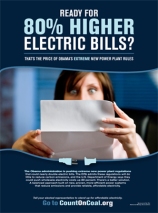There will be much of the predictable back-and-forth today about the EPA’s new proposed rules to cut carbon emissions from power plants. The media analysis will of course use the crutch of the “he-said/she-said” meme to cover the issue. There will be the mentions of the studies that say these new rules will kill the economy, countered with the studies that say the rules will help the economy. There will be the look at coal-state Democrats running for election and how they react to the new rules. And given that President Obama is heading off to Europe, there will be a look at how the world is reacting to the news that the U.S. is actually doing something about climate change. Once the sound and fury subsides a bit, and the media goes on to the next story, what should we be looking for?
- What happens with Keystone?
The cynic will say that now that President Obama has done this great thing to fight climate change, he’ll tack back the other way in the run-up to this year’s election by approving the Keystone Pipeline. Conservative Democrats will use that as a victory to push them over the top on election day. I may be naïve, but I’m hopeful that President Obama will stay consistent and block Keystone once and for all. The question is whether he’ll do it before the elections or afterwards. If he does it soon, he’d be creating a narrative that he’s taking multiple steps to fight climate change, which will be cheered by green-minded voters and the groups that represent us. I believe it would do more to rally the base than anything else. The effects of this on the positive side would more than outweigh any potential drawbacks, politically. And of course it’s the right thing to do. If you believe, as the President has stated, that climate change is a mortal threat to our children and future generations, it’s tough to defend approval for a pipeline that will bring the dirtiest fossil fuels to our country.
- How does the next Democratic Presidential nominee campaign on these rules?
Unfortunately, the President had to take action on climate outside of the legislative process, which means that future Presidents will have a lot to say about whether these rules stick or not. The immediate next President is the most important in this equation. It’s like dieting in a way. It’s one thing to lose the pounds, but it’s quite another to keep them off. Putting the rules in place is great, but keeping them in place will sit squarely on the shoulders of the next Administration. Assuming the Republicans won’t nominate anybody who supports these rules, our only hope is that the Democrat nominee does. To that end, it’s vital that we watch what Ms. Clinton, VP Biden, Mr. O’Malley, or any other potential nominees say now, and in the near future about the EPA rules. We have got to put a lot of effort into ensuring that the next Democratic Presidential nominee is an iron-clad supporter of the rules to cut carbon emissions from power plants.
- What actions do forward thinking businesses take to take advantage of new business opportunities from the rules?
This may take a few years to play out. Initially there will be uncertainty in the business world about whether these rules will stick or not. Once it becomes clear, hopefully, that they will stick, you’ll see businesses look for how the rules create new lucrative opportunities. The usual suspects are in the wind, solar and renewable world. But in order for these rules to be around for the long term, and to even get strengthened, we will need to see other industries and verticals step in. The rules could act as a spur for energy efficiency, new smart grid applications, energy storage, apps that change consumer behavior, and things we cannot even think of right now. The fact that the Maryland Renewable Portfolio Standard (RPS) brought in so many new solar companies and their offshoots has done much to solidify the law and fend off attacks. The same needs to happen for these rules. Let’s see some innovation spring forth from the business world.


